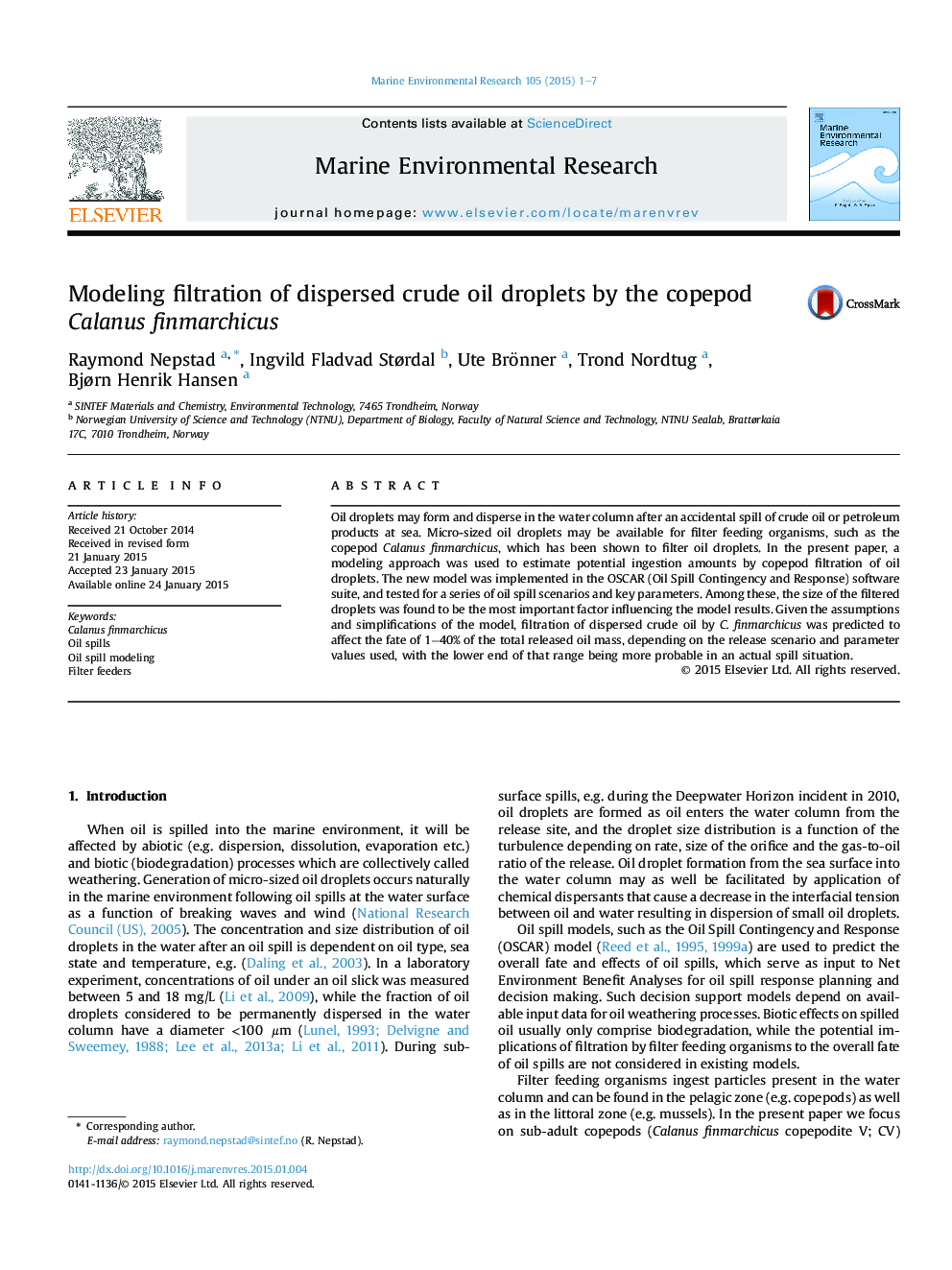| Article ID | Journal | Published Year | Pages | File Type |
|---|---|---|---|---|
| 4550690 | Marine Environmental Research | 2015 | 7 Pages |
•We model copepod filtration of oil droplets following an oil spill.•Filtration was estimated to affect 1–40 % of the total mass of spilled oil.•Size range of filterable oil droplets was the most important model parameter.
Oil droplets may form and disperse in the water column after an accidental spill of crude oil or petroleum products at sea. Micro-sized oil droplets may be available for filter feeding organisms, such as the copepod Calanus finmarchicus, which has been shown to filter oil droplets. In the present paper, a modeling approach was used to estimate potential ingestion amounts by copepod filtration of oil droplets. The new model was implemented in the OSCAR (Oil Spill Contingency and Response) software suite, and tested for a series of oil spill scenarios and key parameters. Among these, the size of the filtered droplets was found to be the most important factor influencing the model results. Given the assumptions and simplifications of the model, filtration of dispersed crude oil by C. finmarchicus was predicted to affect the fate of 1−40% of the total released oil mass, depending on the release scenario and parameter values used, with the lower end of that range being more probable in an actual spill situation.
